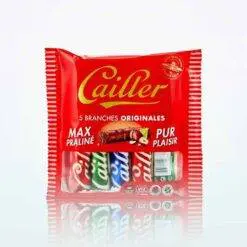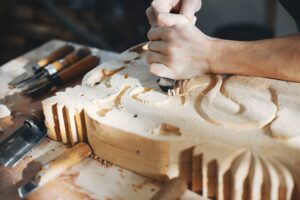How Proper Sealing and Insulation Improve Home Comfort in Lakewood, CO
Proper sealing and insulation dramatically improve home comfort in Lakewood, CO by creating an effective thermal barrier that keeps indoor temperatures stable year-round. Homes with optimized insulation and professional air sealing maintain comfortable temperatures while reducing heating and cooling costs by 15-30% according to the U.S. Department of Energy. In Lakewood’s climate, where temperatures can range from below freezing to over 90°F throughout the year, comprehensive spray foam insulation creates a seamless barrier that prevents energy loss through walls, attics, and crawl spaces.
The high-altitude climate of Lakewood presents unique challenges that quality insulation addresses effectively. Research from the Colorado Energy Office indicates that properly insulated homes require significantly less energy to maintain comfortable temperatures in both winter and summer months. The key is selecting appropriate insulation materials with suitable R-values for each area of the home and ensuring professional installation that eliminates thermal bridges and air leaks.

Climate Challenges in Lakewood and Insulation Solutions
Lakewood’s climate demands specialized insulation approaches due to its high elevation, significant seasonal temperature variations, and periodic extreme weather events. The city’s location at approximately 5,500 feet elevation means thinner air that transfers heat differently than at sea level. Closed-cell spray foam insulation excels in this environment by creating an airtight seal that maintains consistent indoor temperatures regardless of outdoor conditions.
Winter temperatures in Lakewood regularly dip below freezing, while summer days can exceed 90°F. This temperature range makes thermal regulation a year-round concern. According to the National Renewable Energy Laboratory based in nearby Golden, CO, homes in this region can lose up to 40% of their conditioned air through inadequate insulation and air leaks. Proper insulation with appropriate R-values significantly reduces this energy waste.
Insulation Performance in Lakewood’s Climate
| Insulation Type | R-Value Per Inch | Moisture Resistance | Air Sealing Capability | Lifespan (Years) | Performance in Lakewood Climate |
|---|---|---|---|---|---|
| Closed-Cell Spray Foam | 6.0-7.0 | Excellent | Excellent | 80+ | Superior for all applications |
| Open-Cell Spray Foam | 3.5-3.7 | Good | Very Good | 50+ | Good for interior walls and noise reduction |
| Fiberglass Batts | 2.9-3.8 | Poor | Poor | 15-20 | Inadequate for extreme temperature variations |
| Cellulose | 3.1-3.8 | Fair | Fair | 20-30 | Settles over time, reducing effectiveness |
| Mineral Wool | 3.0-3.3 | Good | Fair | 30-40 | Reasonable but requires precise installation |
The Colorado Energy Commission’s 2024 study of regional home efficiency found that spray foam insulation provided the best performance metrics for the Front Range region, with homes using this material showing 27% lower energy consumption compared to those with traditional insulation materials.
Key Areas for Insulation Improvement
Identifying and addressing the most vulnerable areas of a home significantly enhances comfort and energy efficiency. In Lakewood homes, certain areas consistently prove to be common trouble spots where insulation improvements deliver the greatest benefits.
Attic Insulation
Attics represent one of the most critical areas for proper insulation in Lakewood homes. Heat naturally rises, making inadequately insulated attics responsible for up to 25% of a home’s total heat loss in winter. During summer, poorly insulated attics can reach temperatures exceeding 150°F, dramatically increasing cooling costs.
Bonus Tip: When insulating attics in Lakewood, ensure proper ventilation remains in place. The combination of excellent insulation with appropriate ventilation prevents moisture buildup while maximizing thermal performance.
Wall Insulation
Many older Lakewood homes have insufficient wall insulation, leading to uncomfortable cold spots and increased energy consumption. Spray foam insulation can be applied to existing walls with minimal disruption, filling cavities completely and creating an effective thermal barrier.
Crawl Space Insulation
Uninsulated crawl spaces are significant contributors to energy loss and can create uncomfortable floor temperatures in Lakewood homes. Properly insulating crawl spaces not only improves comfort but also prevents moisture problems and improves indoor air quality by creating a sealed environment that blocks out pests, allergens, and humidity.
Rim Joist Sealing
The rim joist area—where the foundation meets the wood framing—is often overlooked but represents a major source of energy loss in Lakewood homes. This area typically contains numerous gaps and penetrations that allow air infiltration. Sealing these areas with spray foam creates an effective thermal barrier that significantly improves home comfort.

Technical Specifications for Optimal Insulation in Lakewood
| Home Area | Recommended R-Value | Insulation Depth | Estimated Energy Savings | Primary Comfort Benefits |
|---|---|---|---|---|
| Attic | R-49 to R-60 | 16-20 inches | 20-30% | Consistent upper-floor temperatures |
| Exterior Walls | R-21 to R-28 | 3.5-5 inches | 15-25% | Elimination of cold/hot spots |
| Crawl Space | R-19 to R-30 | 3-5 inches | 10-20% | Warmer floors, reduced humidity |
| Rim Joists | R-21 to R-30 | 3-5 inches | 5-10% | Reduced drafts, improved air quality |
| Basement Walls | R-15 to R-19 | 2-3 inches | 10-15% | Consistent basement temperatures |
Things to Consider Before Making a Decision
Before deciding on insulation improvements, several factors should be evaluated to ensure optimal results for a Lakewood home:
- Home Age and Construction: Older homes typically have different insulation needs than newer construction. Homes built before 1980 often have minimal existing insulation.
- Current Energy Costs: Analyzing utility bills provides insight into potential savings. Homes with high energy costs generally benefit most from comprehensive insulation upgrades.
- Existing Moisture Issues: Any existing moisture problems must be addressed before adding insulation to prevent trapping moisture within walls or attics.
- Ventilation Requirements: Proper ventilation works with insulation to maintain healthy indoor air quality. A balanced approach ensures comfort without creating moisture issues.
- Budget and Long-term Plans: While high-quality insulation represents an investment, the return through energy savings and improved comfort typically occurs within 3-5 years according to the Rocky Mountain Institute.
Bonus Tip: In Lakewood’s climate, prioritize air sealing before adding insulation. Even the best insulation performs poorly if air can freely move around it. Professional thermal imaging can identify specific leakage points that might not be visible to the naked eye.
Comprehensive Insulation Services
RIB Spray Foam offers specialized insulation solutions tailored to Lakewood’s unique climate challenges:
Closed-Cell Spray Foam – Creates an airtight seal with superior R-value (6.0-7.0 per inch) and moisture resistance, ideal for Lakewood’s variable climate conditions. This solution provides excellent structural reinforcement while preventing air infiltration completely.
Residential Spray Foam – Comprehensive whole-house insulation solutions designed specifically for existing homes and new construction in Lakewood, focusing on attics, walls, and crawl spaces to create a complete thermal envelope.
Pole Barn Spray Foam – Specialized insulation for outbuildings and pole barns that creates comfortable year-round spaces while protecting equipment and storage from Lakewood’s temperature extremes.
Crawl Space Spray Foam – Targeted solution for one of the most problematic areas in Lakewood homes, creating a moisture-resistant thermal barrier that improves floor comfort and indoor air quality.
New Construction Spray Foam – Integrated insulation systems installed during the building process, allowing for optimal placement and maximum efficiency in new Lakewood homes.
Common Questions About Insulation in Lakewood
How quickly will I notice improved comfort after insulation upgrades?
Most homeowners report noticeable comfort improvements immediately after insulation installation. The home maintains temperature more consistently, with fewer drafts and cold spots. Complete temperature stabilization typically occurs within 24-48 hours as the heating and cooling system adjusts to the improved thermal envelope.
What areas of my Lakewood home should be prioritized for insulation?
In Lakewood’s climate, the attic typically provides the greatest return on investment, followed by crawl spaces, exterior walls, and rim joists. A professional energy assessment can identify specific areas where your home is losing the most energy.
How does Lakewood’s elevation affect insulation needs?
Lakewood’s higher elevation means homes experience more intense UV exposure and greater temperature fluctuations than lower-elevation locations. This environment demands insulation with higher R-values and excellent air-sealing properties to maintain consistent indoor comfort.
Frequently Asked Questions
How long does spray foam insulation last in Lakewood homes?
Quality closed-cell spray foam insulation typically lasts for the lifetime of the structure—80+ years—without degradation in performance. Unlike traditional insulation materials that can settle or compress over time, spray foam maintains its shape and effectiveness indefinitely.
Will insulation improvements reduce outside noise in my Lakewood home?
Yes, proper insulation significantly reduces noise transmission. Closed-cell spray foam can reduce sound transmission by up to 80% compared to uninsulated spaces, creating a quieter indoor environment protected from traffic, neighborhood, and aircraft noise.
Does proper insulation help with allergies or indoor air quality?
Absolutely. By sealing the building envelope, quality insulation prevents the infiltration of outdoor allergens, pollutants, and pollen—a significant benefit during Lakewood’s allergy seasons. The airtight seal also prevents moisture intrusion that could lead to mold growth.
How does spray foam insulation compare to traditional materials for Lakewood’s climate?
Spray foam outperforms traditional insulation in Lakewood’s climate due to its superior air-sealing properties and consistent R-value. While traditional materials like fiberglass rely solely on their R-value for performance, spray foam creates a complete air barrier that addresses both conductive and convective heat transfer.
Can insulation improvements increase my Lakewood home’s value?
According to the Rocky Mountain Association of Realtors, energy-efficient homes with quality insulation typically command 3-5% higher selling prices in the Lakewood market. Documented energy improvements are increasingly valued by buyers concerned with both comfort and operating costs.
Ready to Achieve Year-Round Comfort in Your Lakewood Home?
Proper sealing and insulation transform home comfort in Lakewood’s challenging climate while delivering substantial energy savings. The right insulation solution addresses the specific needs of your home, creating a comfortable environment regardless of outdoor conditions.
Experience the difference quality insulation makes. Schedule your comprehensive home insulation assessment with RIB Spray Foam by calling (970) 645-8077 or emailing ribsprayfoam@gmail.com.
Reviewer:
Grace Walker has been in the spray foam business for 9 years and provided suggestions that helped refine this article’s focus on brand development and simple, consistent marketing efforts.













